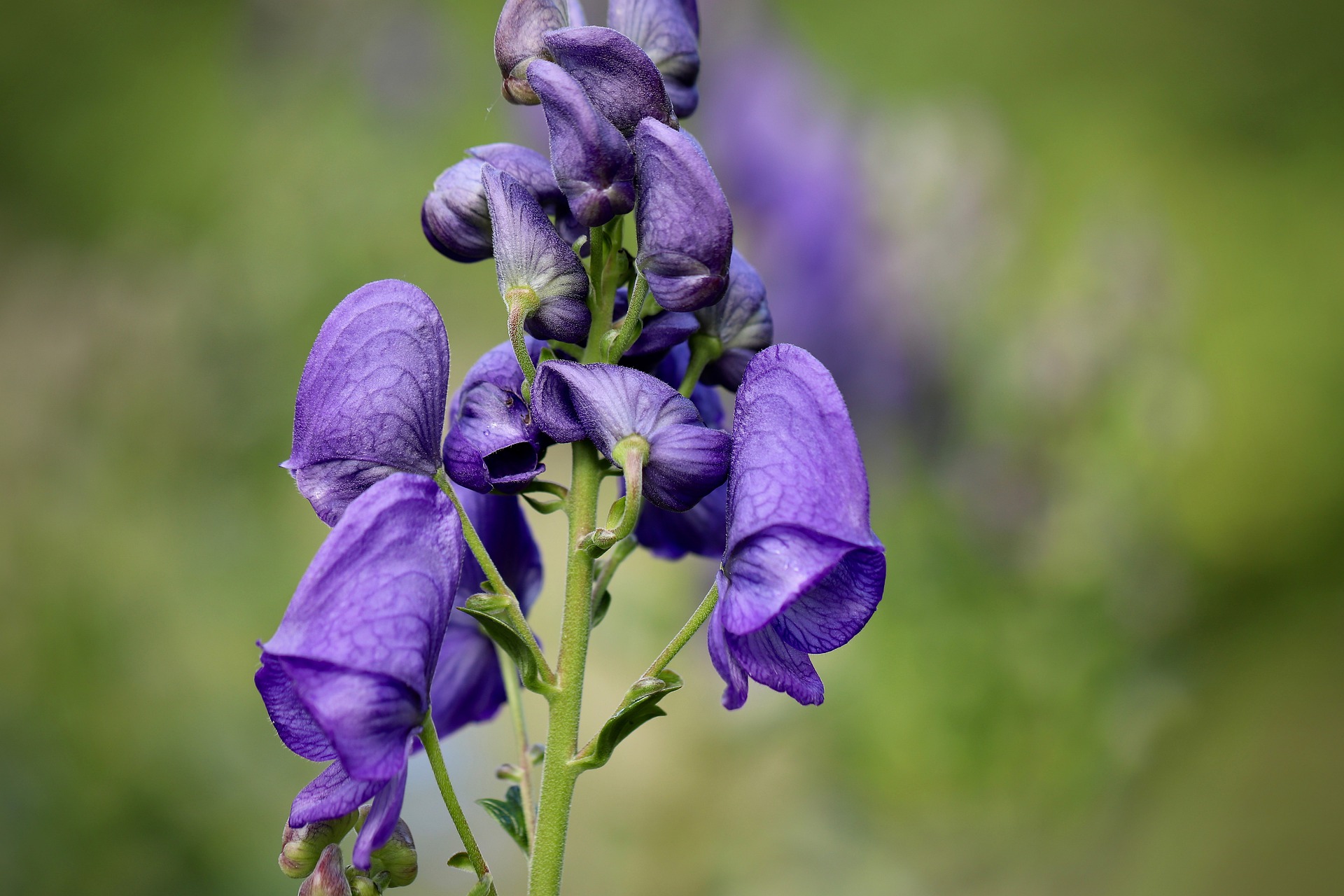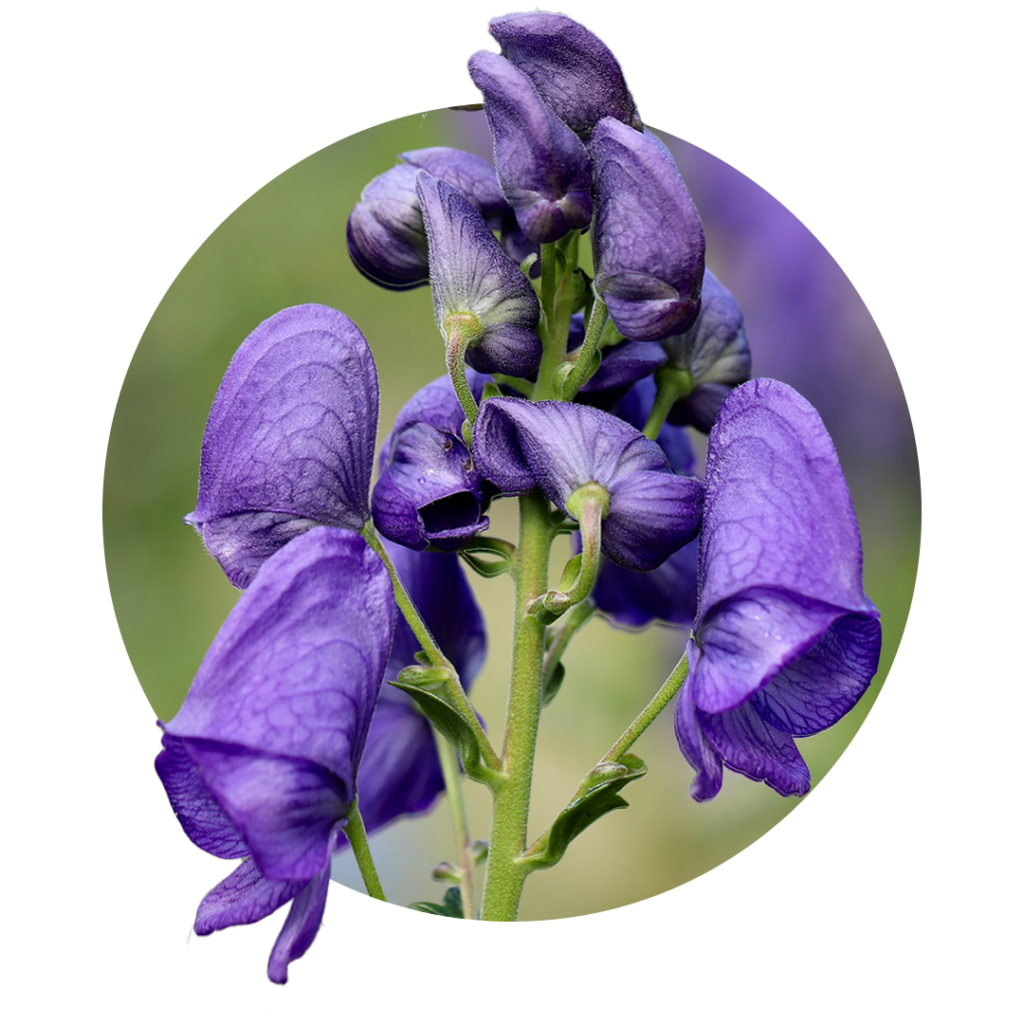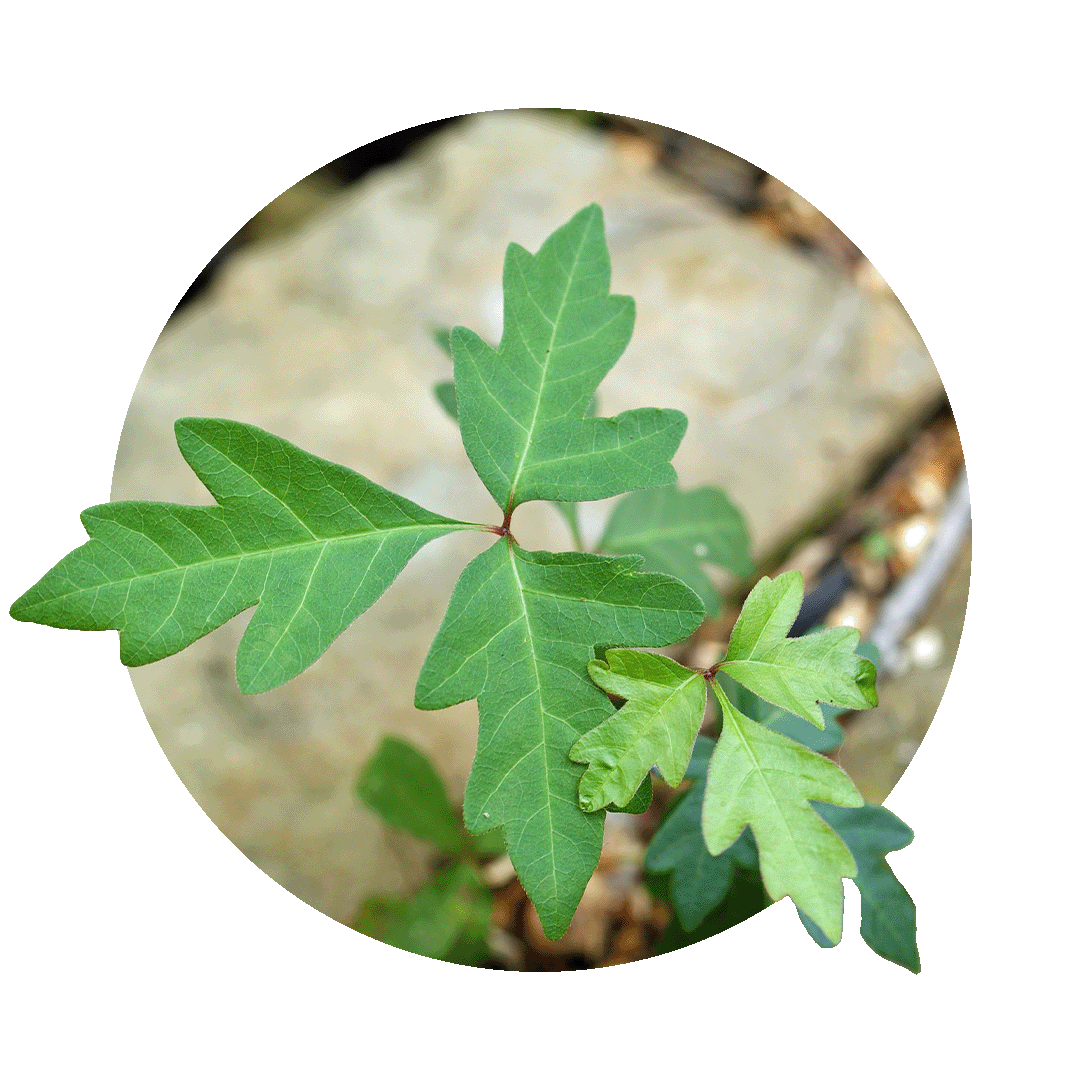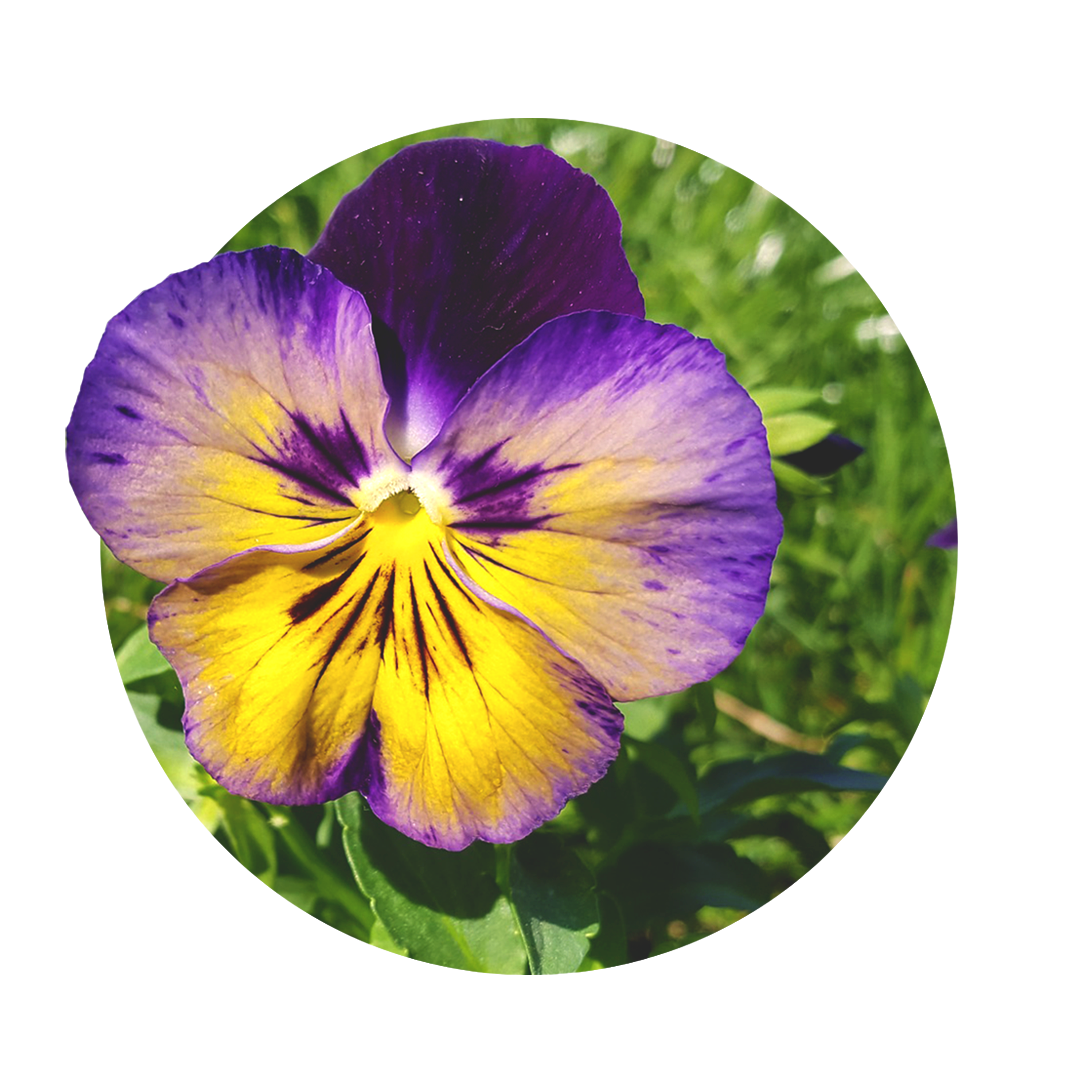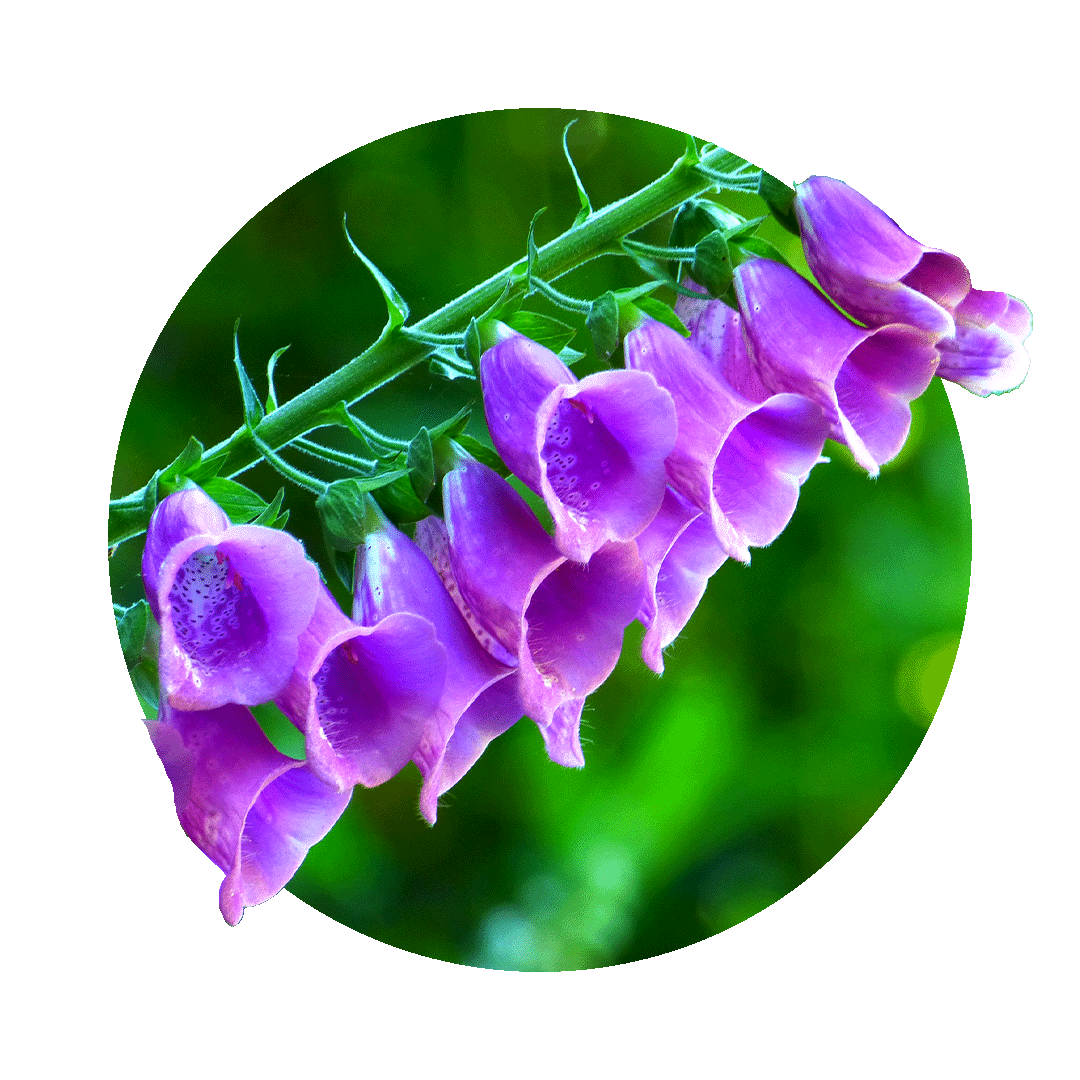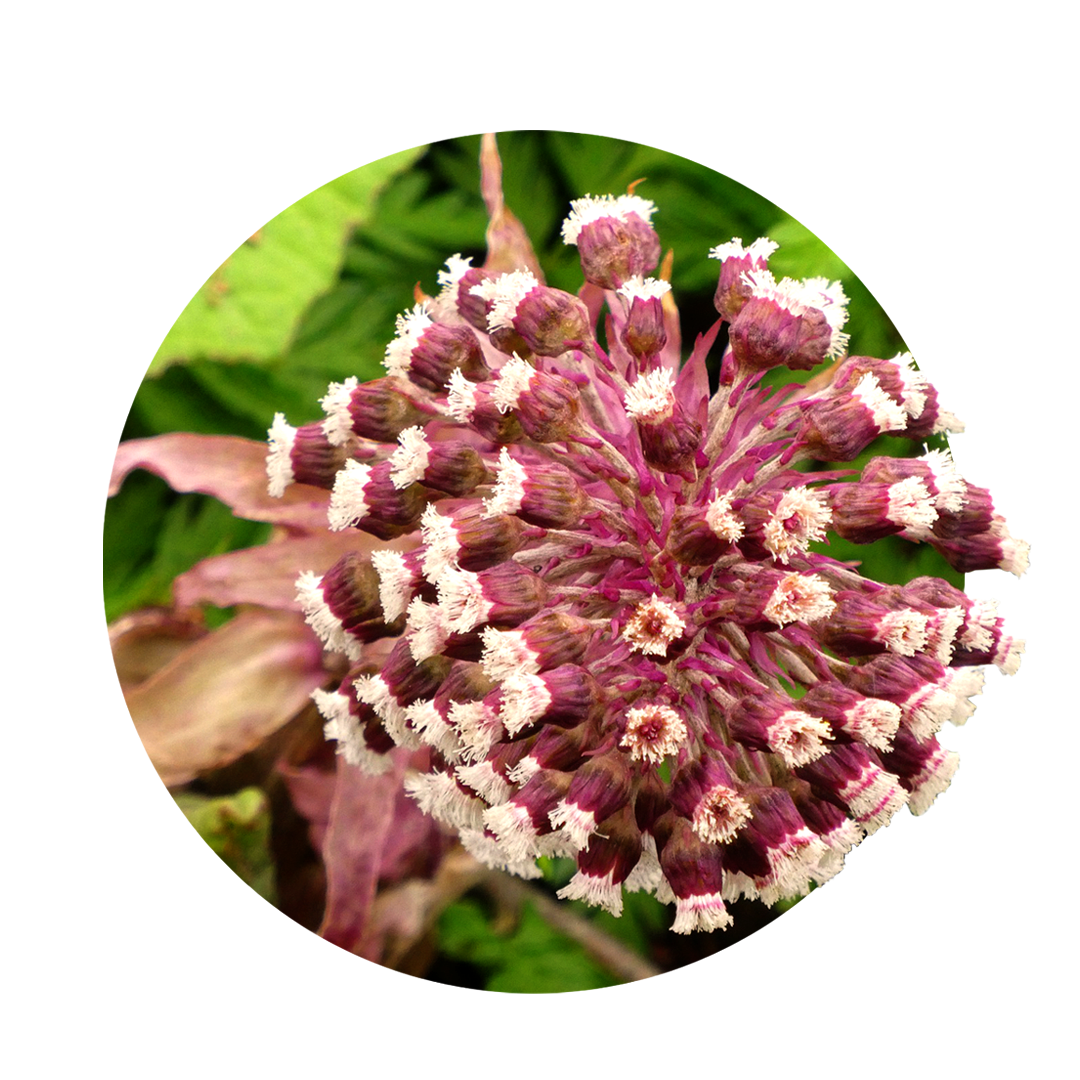aconite: the medicinal plant for flu-like infections
The aconite is one of the most important medicinal plants we have and also the most poisonous plant found in our latitudes. 'Nomen est Omen' is truly the program here, because the ferocity of this plant is unparalleled. In mythology, it is said that Aconite grew on the earth where the slobber of the bestial hellhound Cerberus touched the ground. A dog that was known to reliably ensure that no living person enters the realm of the dead and no dead person will ever leave it.
The effect of the poison is already noticeable on skin contact, it causes a rare, very special phenomenon called anaesthesia dolorosa. In this case, the affected area becomes numb, but hurts violently. Therefore, its use in neurological phenomena in modern naturopathy is not accidental.
Facts about balaclava
Did you know that...
...aconite is the most poisonous plant in our flora?
...the cultivation of balaclava in the Middle Ages was punishable by death?
What is balaclava?
The aconite is a herbaceous plant from the buttercup family that grows up to 1.2 m high. It is native to our country and is considered the most poisonous plant in our latitudes. Especially the seeds and the roots contain very high concentrations of poison and must be treated with extreme caution. The root is a turnip-like taproot that is mostly used for pharmacological preparations. The flowers of the plant have a helmet-like shape with the opening directed towards the ground. Together with its dark green herb and dark blue flowers, the plant shines with a dark beauty, referring to its underworld origin. In our country, the aconite likes to be planted in cottage gardens and is relatively widespread.
General and healing properties of Aconitum napellus
Analgesic
The aconite is analgesic. Heavily diluted in oils and ointments, it is therefore used externally for nerve pain as a rub. The nerves are slightly anesthetized and the pain is quickly reduced to a tolerable level.
Antipyretic
Aconitum napellus is antipyretic. In the case of sudden fever with a strong feeling of cold, aconite is taken internally in a very dilute form to take advantage of its temperature-lowering effect. The fever drops to a lower level and the patient's general condition noticeably improves again.
Anti-inflammatory
aconite is anti-inflammatory. Aconite is used to relieve the acute, first phase of fast-onset, violent inflammations. The inflammations usually recede quite quickly and weaken.
Aconitum napellus: Ingredients
The ingredients of the plant are a mixture of various alkaloids, all highly toxic and potent.
- Aconitine, 0.3-2 % in the tuber
- Aconitine, 0.2-1.2 % in the herb
- Divisionin
- Tannins
Balaclava: effect for body and mind
In diseases where Aconitum napellus is used as a medicinal plant strongly diluted, it is always about sudden, fast and violent symptoms. Thus, it is considered one of the medicinal plants for sudden colds caused by cold and wind, as well as high fever or first remedy of choice after shock. In this case, the alkaloids contained in the aconite regulate the body temperature and lead to a decrease in the elevated temperature. The alkaloids here act centrally on the nervous system and therefore make the plant so potent in states of shock, where mental overstimulation leads to convulsions, tension and fever through the central nervous system. Aconitum napellus is considered in homeopathy and classical phytotherapy as one of the great remedies, but may only be used homeopathically from D4 potency or as a spagyric preparation.
Properties of Aconitum napellus
- Cold Relief
- Anxiety Relieving
- Soothing
- Temperature lowering
- Shock dissolving
- Analgesic
Fields of application in naturopathy
In the case of aconite, it is always important to keep in mind that the modality of fierceness and rapid, sudden onset of illness is crucial in remedy selection.
aconite for infections & colds
Especially in spring and autumn, when cold winds cause rapid cooling of the body, aconite is used to treat sudden infections and colds. Here, aconite with its alkaloids centrally regulates the body temperature and thus helps to quickly reduce and balance the fever that usually occurs.
Aconitum napellus for fever
Aconitum napellus acts directly on the central nervous system with its toxins and causes a drop in body temperature. In case of fever, the body raises this temperature to keep the immune system sharp. However, it often overshoots the mark and the temperature rises sharply. Aconitum napellus has the opposite effect, lowering the temperature and thus helping to harmonize the excessive rise again.
aconite for rheumatic complaints
Often flatulence is due to constipation conditions where the stool remains too long in the intestine. Kermes berry stimulates the flow of bile and has a mild laxative effect. As a result, the stool leaves the intestine faster, no longer causes flatulence and digestion relaxes again.
Aconitum napellus for inflammations
Sudden inflammations can occur in the context of various diseases. They are usually accompanied by pain and increased temperature. Aconitum napellus has a lasting effect against both and helps the patient to get the inflammations under control again. It can be used externally and internally.
aconite for facial neuralgia & nerve pain
In facial neuralgia and nerve pain, the nerves are usually directly affected by an inflammatory event. These usually come on suddenly and violently. The aconite with its alkaloids has an anesthetic effect on nerves and thus relieves pain and spasms. The nerves calm down and the acute pain subsides.
Aconitum napellus for anxiety & shock
Sudden anxiety and shock lead to fever, convulsions and thus pain due to a strong activation of the central nervous system by stress. The aconite, with its nerve-active agents, influences the central nervous system, calms it down and acts against the consequences of the anxiety or shock. The fever, cramps and associated pain subside again and the regeneration phase can begin.
Notes on the use of balaclava
Basically, Aconitum napellus is a remedy for the treatment of acute conditions and is actually never used as a permanent therapy. Homeopathic dilutions from D4 or spagyric preparations are used. Externally it is mostly administered for the treatment of nerve pain and inflammation, internally rather for systemic.
Aconitum napellus during pregnancy & lactation
Due to its alkaloid-based effects, it is not recommended to be taken or used during pregnancy and lactation.
Balaclava as poison
aconite was used as a poison very early in history. In the Middle Ages, the cultivation of Aconitum napellus was even punishable by death. Today, most accidents with Aconitum napellus happen to amateur gardeners who do not know what they are dealing with. When gardening, gloves are strictly required, because the toxin is also skin-permeable and can already lead to symptoms of poisoning on contact. The lethal amount of toxin is very small, which is why an emergency doctor should always be called via the poison control center if poisoning is suspected.
Discover our sprays
With natural methods such as the individual spagyric sprays from Zimply Natural, complaints can be treated and sustainably alleviated.
Use the healing power of aconite!
Use the healing power of aconite and our other 100 medicinal plants for the natural relief of your ailments. Improve your well-being and support your body, mind and soul! Use our configurator to create your personal spagyric spray, which is tailored to your needs and accompanies you on your natural path to the improvement of body, mind and soul.

